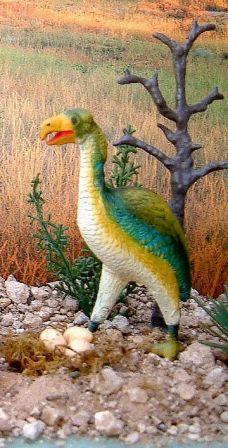Paleocene
updated 111113
Diatryma and Gastornis have attracted the public but not much else from the epoch has caught on the public attention. Giant birds are found in the Americas, Africa, Europe and Australia. Asia is isolated from the other continents and there mammal predators develop. Later the climate changes and forests decline then mammallian predators spread and big birds die out. In the Late Paleocene and Middle Eocene the 9ft tall Diatryma and its relatives dominated
North America and Europe. They are alternately thought to have been the
predators of the period or eaters of rushes and tussocks. Diatryma that used its beak to harvest foliage, fruits, and seeds from the subtropical forests that it inhabited. The bird did not have a hook on the end of its beak - a feature found in all raptors which helps them to hold prey and tear into carcasses.
 Gastornis, also known as Diatryma, is the uncontested most popular Paleocene big bird since MPC first produced it. It is also practically the only toy figure made for that period. The lack of large carnivorous mammals has made it the plausible candidate for apex predator. This now seems unlikely based on the recent bone analysis of the calcium isotopes.
Gastornis, also known as Diatryma, is the uncontested most popular Paleocene big bird since MPC first produced it. It is also practically the only toy figure made for that period. The lack of large carnivorous mammals has made it the plausible candidate for apex predator. This now seems unlikely based on the recent bone analysis of the calcium isotopes.
Paleocene–Eocene Thermal Maximum is a rapid warming that marks the end of the Paleocene. Global temperatures rose by about 6 °C with a rapid turn over of species.
